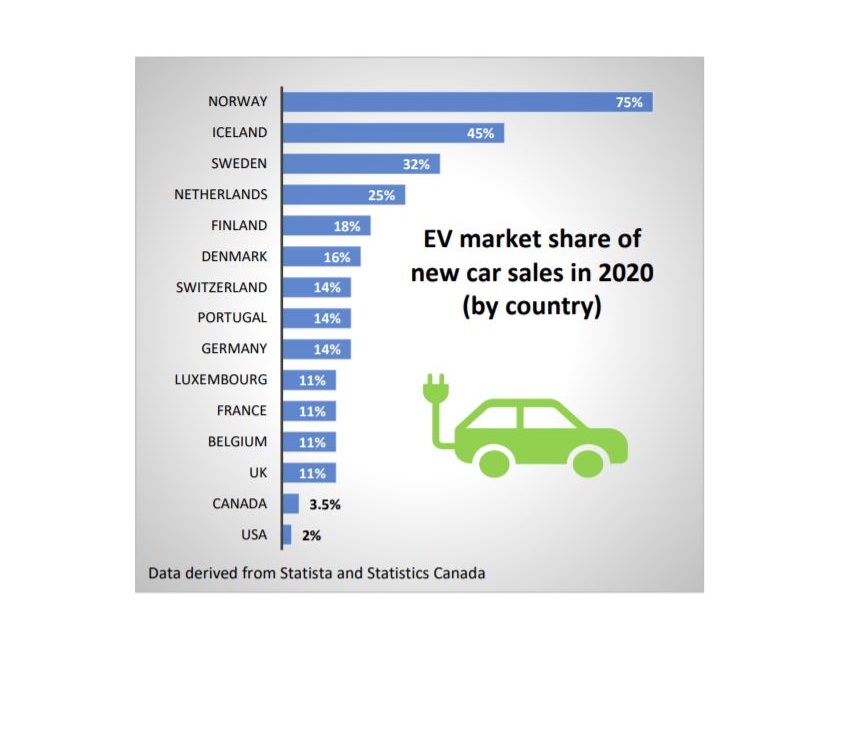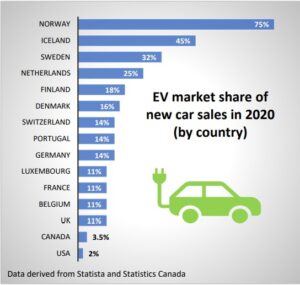Electric vehicles: part of a global climate change solution
Electric vehicles (EV) may not solve the issues associated with climate change; they may play a key role in helping reduce greenhouse gas emissions (GHG). According to Our World in Data, the energy sector is responsible for 73% of all GHG emissions. That rate includes roughly 16% of emissions associated with transportation, of which 12% is related to road transportation.
In Canada, road transportation accounts for roughly one-fifth of the nation’s total GHG emissions. Eliminating carbon emissions from passenger vehicles is part of the national plan to reach net-zero by 2050. With that in mind, the Federal government expects half of all new cars sales in Canada to be zero-emission vehicles by 2030. That rate is expected to reach 100% by 2035.
Last week’s fall economic statement included another $73 million to incentivize Canadians to purchase EVs through the Incentives for Zero Emissions Vehicles program. Since 2019, the Government has budgeted nearly $660 million for the program thus far.
With the world moving towards more electric vehicles, Canada’s share of zero-emission vehicles was 2.9% of all new car sales in 2019. That market share increased to 3.5% in 2020. Despite more Canadians buying new battery-electric or plug-in hybrid vehicles in the last two years, Canada’s rate pales in comparison to global leaders in the EV race.
According to Statista, Norway is the global leader in EV sales. In 2020, 75% of all new passenger car sales were EVs. For more than 20 years, the Nordic country has offered incentives for EVs including tax and road toll exemptions. Not surprisingly, Norway is also considered among the top ten eco-friendly countries in the world.
Iceland ranked second with an EV market share of 45%, followed by Sweden at 32%. In fact, the top ten positions for higher EV market share rates were all European countries. Luxembourg, France, Belgium and the UK were all tied in tenth place at 11%.
Compared to the rest of the world, the EV share of new passenger car sales was a meager 2%. The Biden administration aims to change that with additional supports to move forward EV adoption. Part of the US trillion-dollar infrastructure bill will include $7.5 billion allocated for a larger network of EV charging stations. Another $5 billion is earmarked for low and zero-emission buses.
The scope of a global transition to zero emission vehicles will not be an easy one. Nor does it come with zero impact on the environment. While EVs do not directly emit any GHG, they run on electricity. In many parts of the world, electricity is produced from fossil fuels. That type of energy is used to manufacture EVs, particularly the battery component. Critics argue that battery production emission may have a larger impact on the benefits of electric vehicles.
The transition from conventional internal combustion vehicles to EVs may in fact play a big role in meeting global climate targets. However, experts caution that the rapid decarbonization of electricity generation also factor into the greater picture for EVs to be considered entirely zero emission.




